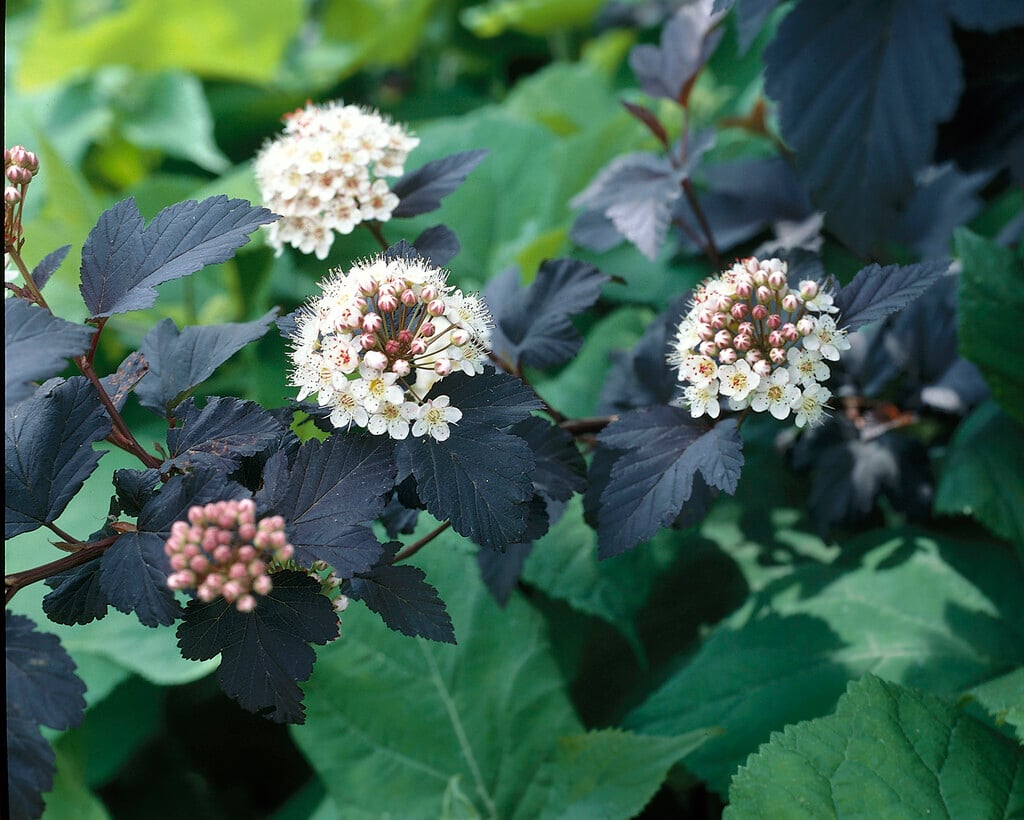Spiraea opulifolia
common ninebark
A vigorous deciduous shrub up to 3m high, with layered, flaking bark and an upright, arching habit. Leaves are broadly ovate, toothed and divided into three lobes. Dense, rounded clusters of small white flowers tinted with pink are produced along the stems in early summer, followed by reddish-green seed pods
Size
Ultimate height
2.5–4 metresTime to ultimate height
5–10 yearsUltimate spread
1.5–2.5 metresGrowing conditions
Moisture
Moist but well–drainedpH
Acid, Alkaline, NeutralColour & scent
| Stem | Flower | Foliage | Fruit | |
| Spring | Green | |||
|---|---|---|---|---|
| Summer | White Pink | Green | ||
| Autumn | Green Yellow | Green Red | ||
| Winter |
Position
- Full sun
- Partial shade
Aspect
East–facing or South–facing or West–facing
Exposure
Exposed or Sheltered Hardiness
H7Botanical details
- Family
- Rosaceae
- Native to GB / Ireland
- No
- Foliage
- Deciduous
- Habit
- Bushy, Columnar upright
- Genus
Physocarpus are bushy deciduous suckering shrubs with palmately lobed leaves and corymbs of small cream flowers in early summer, followed by small, bladdery brown fruits
- Name status
Correct
How to grow
Cultivation
Grows best in a sunny spot in neutral to acidic, humus-rich soil. Will tolerate alkaline soils but may become chlorotic on shallow chalk
Propagation
Propagate by seed, by softwood cuttings in summer, or by division, removing rooted offsets in autumn or spring
Suggested planting locations and garden types
- Cottage and informal garden
- Low Maintenance
- Flower borders and beds
Pruning
Pruning group 1 or 2. If thinning or cutting back is required, this should be done soon after flowering
Pests
Generally pest-free
Diseases
May be susceptible to honey fungus
Get involved
The Royal Horticultural Society is the UK’s leading gardening charity. We aim to enrich everyone’s life through plants, and make the UK a greener and more beautiful place.

